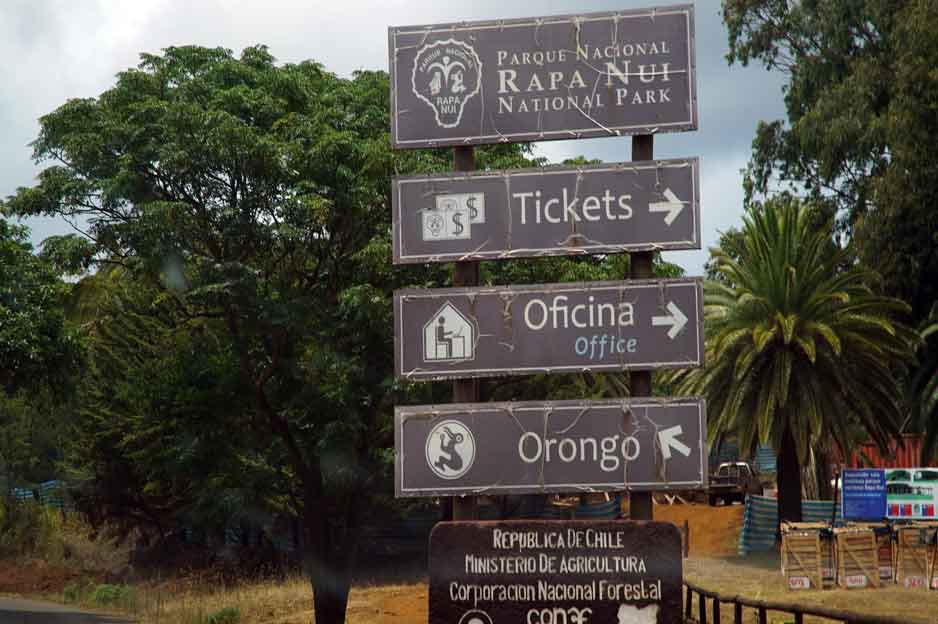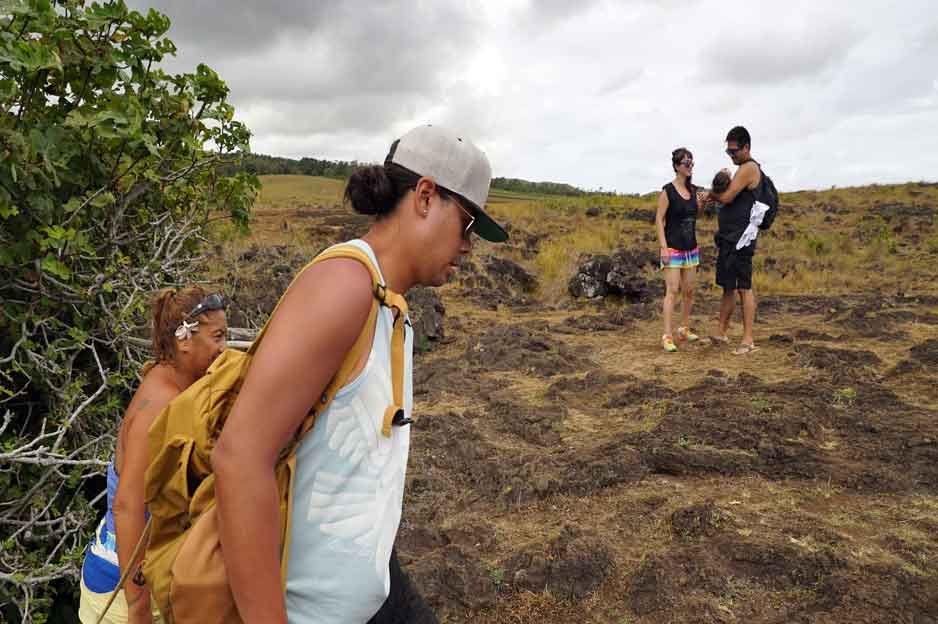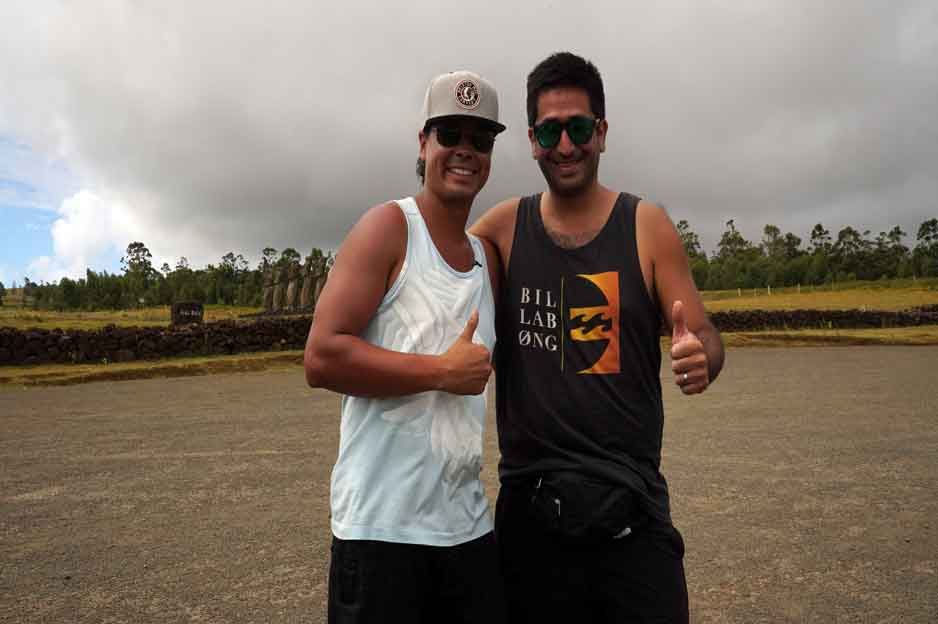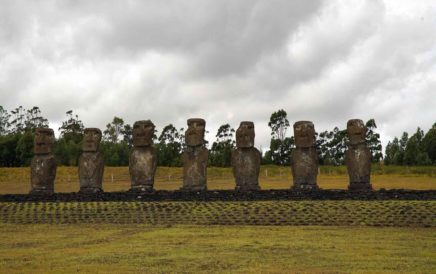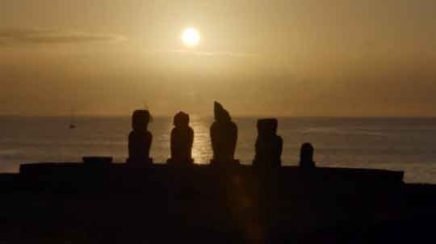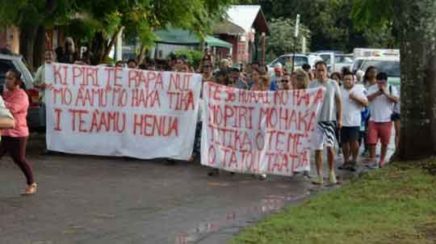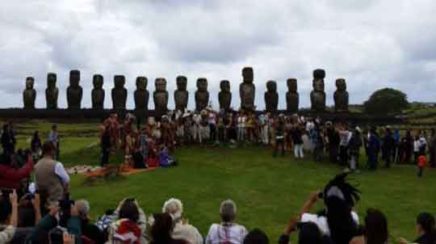The Tapati Festival consists of numerous dancing and singing competitions, including traditional athletic events: running, swimming, canoeing, horse racing, and the island triathlon. In this competition between two family clans, each family selects a young man and woman who will vie for the annual title of King and Queen of Rapa Nui. Now only ceremonial, in the generations past this was how the Rapa Nui selected their leaders, those who were the strongest, the most knowledgeable and best practitioners of their culture and traditional ways.
The Tapati Festival is now well underway and today I’ve come to observe one of the most grueling athletic events where young men race through the town of Hanga Roa with a yolk of bananas weighted around their necks. Valeria’s son Kava is one of the competitors and for him these events are not ultimately about raw athleticism but a living expression of his people’s history and culture.
When the people touch the Moai, I feel bad. The Moai is my face, it’s the face for my mom, the face for my grand-dad, the face of my great-great-grandpa.
